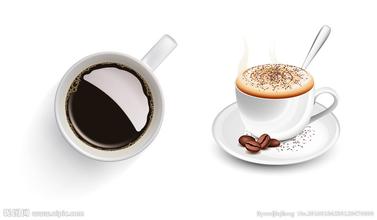Coffee beans taste, taste
1) aftertaste (ahenaste)
The feeling of steam in boiled coffee, from chocolate to charcoal, from spicy to turpentine. The aftertaste is the smell released by the remaining ingredients in the mouth after swallowing coffee.
(2) fragrance (aroma)
The feeling of inhaling the gas released by coffee into the nasal cavity, from fruity, grass to nutty.
(3) Coffee aroma (bouquet)
A comprehensive description of the reaction of coffee to the olfactory organs, including aroma, aroma and smell. Aftertaste.
4) caramel (carmelly)
A feeling of fragrance, usually reflected in the smell. When coffee water is swallowed, the moderately volatile sugar carbonyl compounds contained in coffee water vapor release the aroma produced by extraction. The smell of caramel can often be felt in the nasal cavity. The taste is close to that of candy or syrup.
5) carbon (carbony)
Usually, after drinking deep-roasted coffee, the aftertaste of charcoal is often found in the aftertaste, and the smell of charcoal produced by non-volatile heterocyclic compounds is found in the water vapor released when swallowing coffee. The taste is reminiscent of carbonic acid, similar to a substance such as wood tar alcohol, or pyrimidine, close to a burned substance.
(6) chocolate (chocolaty)
A taste often encountered in the aftertaste of coffee. The water vapor released when swallowing coffee contains moderately volatile p-diazobenzene compounds. The substance remains in the mouth and is reminiscent of unsweetened chocolate or vanilla.
(7) complexity (complexity)
In the coffee aroma, from the coffee aroma. Fragrance. smell. Aftertaste and other aspects of coffee gas. A term used to describe water vapor qualitatively.
(8) plain (flat)
A qualitative description of the aroma of coffee. This concept shows that aroma, aroma, smell and aftertaste can only be slightly felt in coffee gas and water vapor.
(9) aroma (fragrance)
The feeling of aromatic gas compounds released by freshly roasted, freshly ground coffee being inhaled into the nasal cavity. The smell is similar to that of sweet flowers, sweet and spicy.
(10) Fruit (fruity)
The smell often encountered in a cup of coffee. Highly volatile acetaldehydes and esters are produced as the temperature increases during the brewing of coffee. The smell is sometimes sweet, reminiscent of citrus fruits, and sometimes slightly sour, reminiscent of berries.
(11) complete (full)
A description of the overall amount of coffee aroma. In the case of medium strength, the kinds of aroma, aroma, smell and aftertaste in gas and water vapor are more complete.
(12) Grass flavor (herby)
The smell often encountered in a cup of coffee. Volatile acetaldehydes and esters produce this flavor when coffee is brewed as the temperature increases. Sometimes it smells like scented vegetables, such as onions and garlic, and sometimes it smells like beans, such as green peas.
(13) strength (intensity)
A description of the pungent and irritating degree of coffee aroma and the intensity of coffee aroma in gas and water vapor.
(14) odor (nose)
When you swallow coffee water, the movement of the throat causes moisture to emanate from the coffee you swallow. The feeling in the nasal cavity at this time is the smell. From caramel and chocolate to turpentine.
(15) Nutty (nutty)
I often feel it in the smell of coffee. When swallowing coffee, the water vapor emitted from the nose contains moderately volatile acetaldehydes and ketones. Close to many baked nuts.
(16) strong (rich)
A description of the amount of coffee smell. It shows the fragrance of various gases and water vapor. The smell and aftertaste can be felt to be complete and strong.
(17) complete (rounded)
A description of the amount of coffee smell. Coffee that lacks strength in aroma, aroma, smell and aftertaste.
(18) spicy
Often encountered in the aftertaste of coffee. Weakly volatile hydrocarbons are produced, spicy. Reminiscent of woody spices (such as cinnamon) or tree seeds (such as clove buds).
(19) Sweet Flower (sweetly floral)
Freshly baked. The aroma of ground coffee beans often contains the smell of sweet flowers. The gases (mainly carbon dioxide) emitted from freshly crushed coffee beans contain highly volatile acetaldehyde and esters. The smell is similar to the fragrance of flowers, such as jasmine.
(20) sweet and spicy (sweetly spicy)
Freshly baked. The aroma of ground coffee beans is often sweet and spicy. The gas (mainly carbon dioxide) emitted from freshly crushed coffee beans contains highly volatile acetaldehyde. Ester. The smell is similar to spices, such as cardamom.
21) turpentine (turpency)
Often encountered in the aftertaste of coffee. The water vapor released when coffee water is swallowed contains weakly volatile hydrocarbons and nitriles. The smell is reminiscent of resin (something similar to turpentine) or medicine (something similar to camphor).

Important Notice :
前街咖啡 FrontStreet Coffee has moved to new addredd:
FrontStreet Coffee Address: 315,Donghua East Road,GuangZhou
Tel:020 38364473
- Prev

Sumatra Coffee Manor, Indonesia
Manning coffee is produced in Sumatra, Indonesia, Asia, also known as Sumatran coffee. The main producing areas are Java, Sulawesi and Sumatra, 90% of which are Robusta species. Among them, Mantelin produced in Sumatra is the most famous. The best of the exquisite traditional Arabica coffee produced in northern Sumatra of Sumatra is called Lindong Lintong and Manning.
- Next

How does the coffee taste when it's deep roasted?
Deep roast coffee differs from other coffees in the mixing process of the basic tastes. Due to the intense thermal decomposition of coffee beans, most of the sugar in coffee is broken down. Loss of sweetness in taste. Due to the addition of carbolic compounds, sweetness is replaced by bitterness. Bitterness is often misunderstood. Bitterness in food is often regarded as something bad. However, in certain foods,
Related
- Does Rose Summer choose Blue, Green or Red? Detailed explanation of Rose Summer Coffee plots and Classification in Panamanian Jade Manor
- What is the difference between the origin, producing area, processing plant, cooperative and manor of coffee beans?
- How fine does the espresso powder fit? how to grind the espresso?
- Sca coffee roasting degree color card coffee roasting degree 8 roasting color values what do you mean?
- The practice of lattes: how to make lattes at home
- Introduction to Indonesian Fine Coffee beans-- Java Coffee producing area of Indonesian Arabica Coffee
- How much will the flavor of light and medium roasted rose summer be expressed? What baking level is rose summer suitable for?
- Introduction to the characteristics of washing, sun-drying or wet-planing coffee commonly used in Mantenin, Indonesia
- Price characteristics of Arabica Coffee Bean Starbucks introduction to Manning Coffee Bean Taste producing area Variety Manor
- What is the authentic Yega flavor? What are the flavor characteristics of the really excellent Yejasuffi coffee beans?

